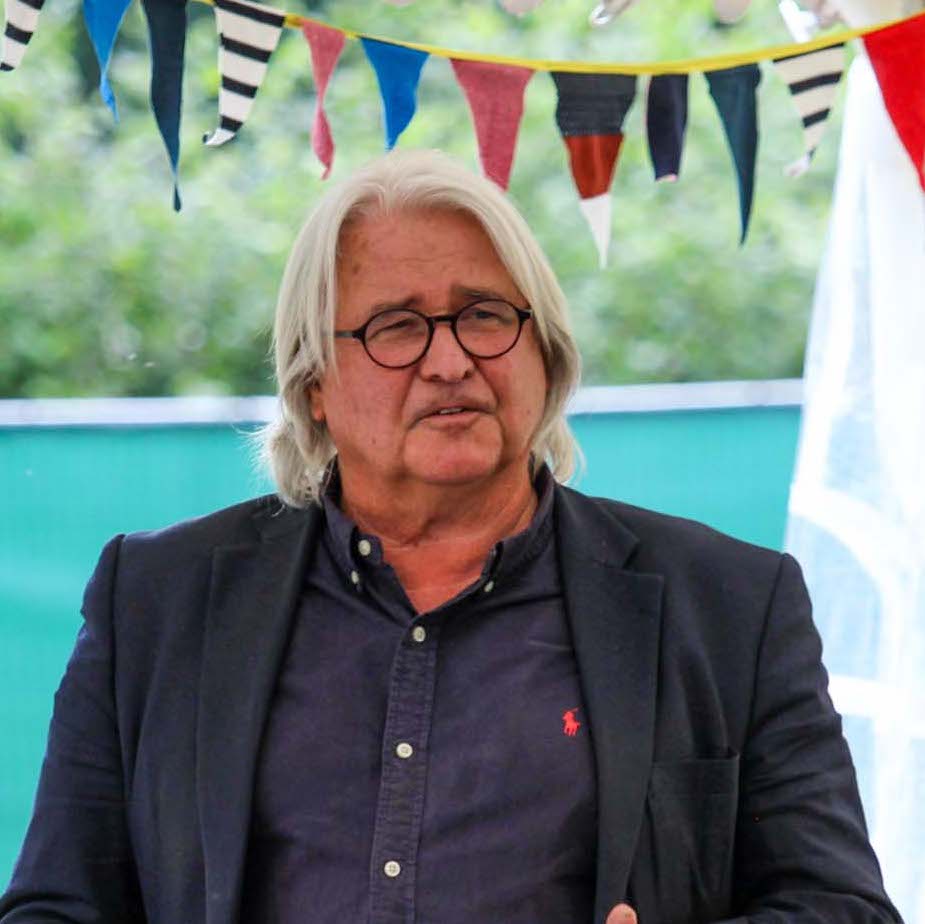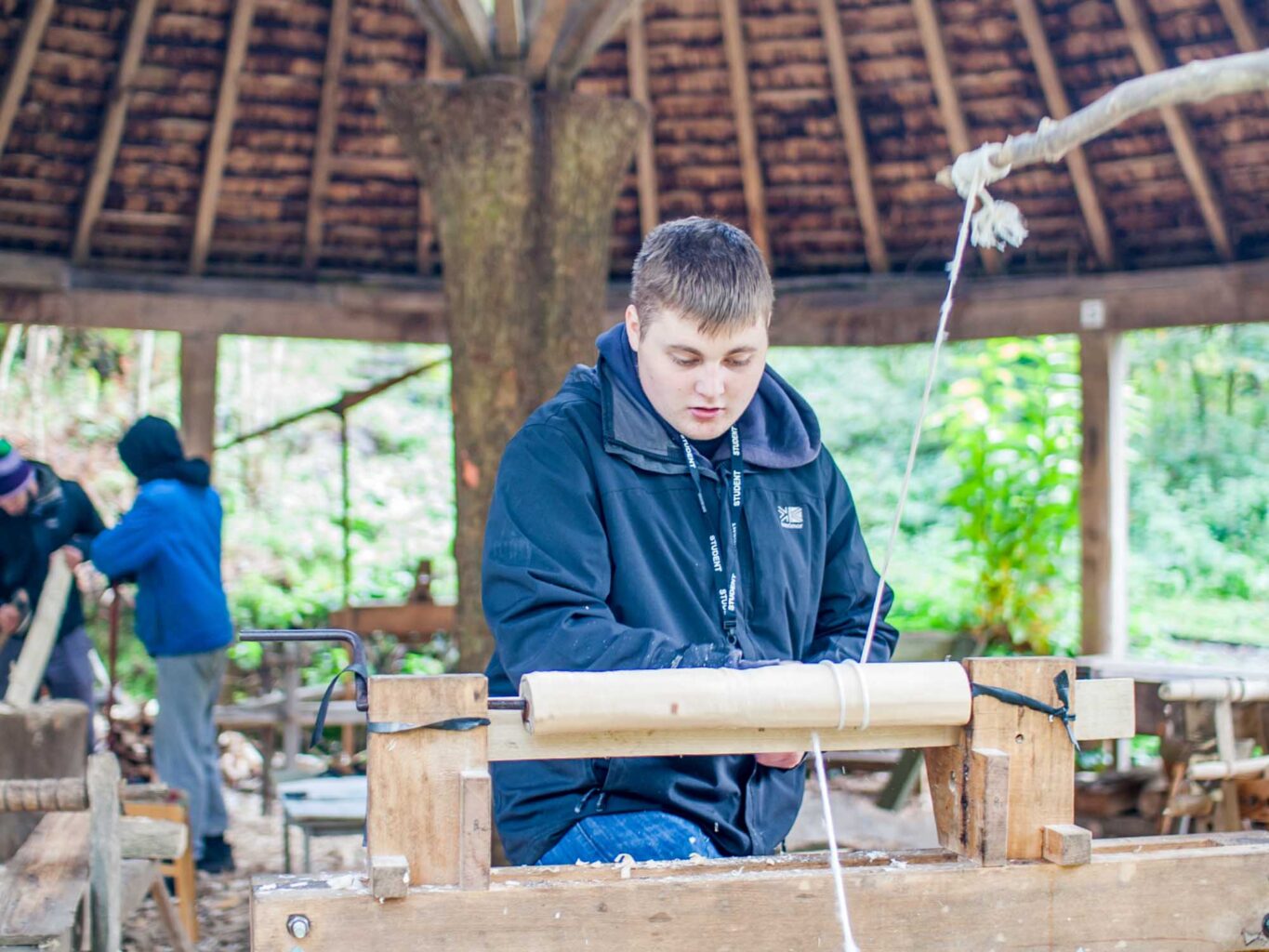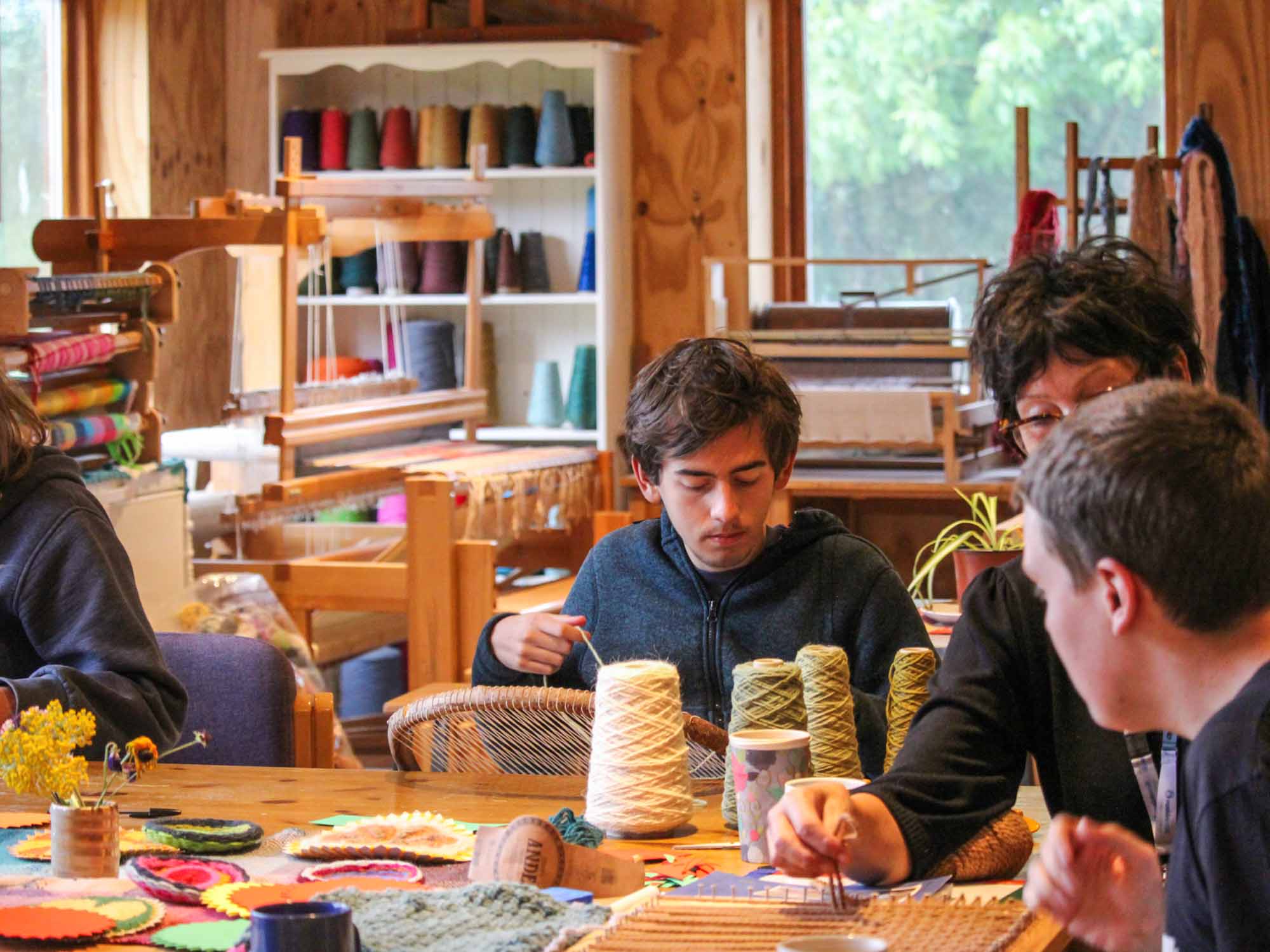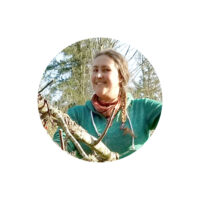Aonghus Gordon is the founder and executive chair of Ruskin Mill, a network of schools, colleges, life centres, and research centres in the United Kingdom that work with individuals with special needs. He was recently awarded an OBE and an honorary doctorate for his work with special needs education. In this interview, he talks with Charles Cross about Practical Skills Therapeutic Education, action research, and the significance of the genius loci: the spirit of a place. The interview took place at the World Social Initiative Forum’s Leadership in Transformation Forum hosted by Ruskin Mill in July.
Charles: Working with pottery was an entryway for you to recognise craft as a therapeutic endeavour. What did the early years look like in exploring this connection?
Aonghus From a very early age, about 25 or 26, I’ve been interested in learning from the practical lawfulness of materials. I noticed that there were certain materials that I could negotiate and others that I couldn’t. I found woodworking particularly complicated and challenging, whereas, with clay, I felt that I could have a certain level of negotiation—up to a point—then the clay would bring me back into the zone of inadequacy. It’s not easy to face up to. The phrase, “The material world doesn’t lie,” became significant for me.
I found myself being asked to do some challenging teaching with young people who were not ready to learn and had developed all sorts of devices to avoid learning—behaviours, entrepreneurial sabotage, and negotiating social codes and laws. I found it very intriguing that, as a teacher, I was not then really up to scratch in dealing with these skills and their alienation from learning, but the craft work could deal with it. Those young people could enjoy the act of changing the world around them. Initially, they didn’t have the skills to change things—we all have to learn to change things correctly, and when we do, not only are we appreciated more, but it takes less effort, we make progress, and life gets easier.
The entry into applying the material in order to help young people grasp a new sense of themselves became of great interest to me. As a result, I set up a training course in a specialist Rudolf Steiner School. I’d agreed to do it, provided I had complete autonomy over the finances and the curriculum. Amazingly enough, I got it. I was able to test my authority and insight, and my ability to negotiate with the young people to help them enter a curriculum. And I had very few issues of discipline and absence. It was cathartic for them because, until then, they were just messing about at the school. So, this new department within the school developed called the Living Earth Training course. It worked with biodynamics, it worked with retail, and it worked with a coffee shop service. In a way, all the foundations of what we now call Practical Skills Therapeutic Education were there in the first week.

And you were learning alongside the students as to how they were being transformed by engagement with the material.
I don’t go into anything that doesn’t have a question, so the early days were very much based on action research, asking, “What does this activity do to me?” The question became a reversal—not, “What am I doing to the world?” but “How is the world shaping me?” and, “How do I get inside the constitution of a student so that we’re growing them from the inside out?”
It also started with the question, “How do I avoid being an imperialist?” Imperialism, to me as an Englishman, is very problematic. The difficulty with some aspects of anthroposophy is that I see a similar mistake being made in certain quarters, because it’s not constituted in what I call the genius loci. That’s the nation, but even more so, the place—the locale where the activity is taking place. If we have an international order of architecture but there’s no response to the situated context, that’s a problem. The being of a place needs to radiate. When I am applying the principles I’ve learned with Ruskin Mill in a new location, I take a “Goethean Science audit”, as I call it, of the nature of the mineral, the water, the botanical, the biological, and the human history of the place. And in doing that audit, I find the curriculum. The curriculum arises out of the sense of place and it is specific to place.
My responsibility is to then audit it and see whether the activities that are generated from that genius loci will deliver the therapeutic outcomes that I’m required to measure—because we get quite a lot of state money—and which I enjoy measuring because, in a way, it validates spiritual science and the results become well known. They are anything from good to outstanding, and on that basis, through measurement, we’ve grown and are still growing. There is no such thing as a year that goes by without some form of major growth. I mean growth in the spiritual sense, in that we’re developing new training courses and getting them validated. We have a research centre and must answer the question, “Why are you doing what you’re doing?” We can answer it in many different ways. If you want it from a spiritual scientific perspective, we can give it. If you want it from a financial perspective, we can answer it. If you want it from a transformational perspective, in terms of the student’s education, health, and care plan, we can measure it. So, the key is to bring science into our spiritual and therapeutic work.
It’s interesting that you’re engaged with craft as a way to transform individuals, but Ruskin Mill is a place where spiritual science is also being tested, proven, and developed in a very concrete manner.
Ruskin Mill has twelve centres, four schools, and a new school on the way. We have six colleges, two life centres, and three research centres, all based in different parts of the UK: Scotland, Wales, and England. It’s practice-based research and research-based practice. What’s happening is that the gifts of Rudolf Steiner are being moved from opinions into insights. We’re trying to find a language that will work so that it’s inclusive, because if Ruskin Mill is going to maintain its position of authority in the mainstream, it has to start from the basis of, “How did you find that out?” We have eight PhDs currently being undertaken in different British universities, and I have not met any university that’s rejected Steiner’s input in this process. On the contrary, we are meeting with lots of real interest. There is a sensitive area around his ideas on evolution, which is understandable, but I don’t get any kickback as we’re not getting involved in that area. And our faculty of PhDs will not only be able to deliver our master’s program but will also be the key doctorates that drive our emerging university, based on a practitioner ethos.
So, I’m interested in practitioners researching their practice, not academics researching practitioners. That doesn’t work for me, but it’s what generally happens. In offering practical resistance in any adult education process, it’s interesting who can sustain it and who can’t. It is a new test of will. It’s a new test of the deed. It’s a new test, taking yourself through the uncomfortable realisation that you’re relatively unskilled with your hands but this doesn’t have to be the case. The insight that drives success is a spiritual insight from Rudolf Steiner. When the physical body works with the etheric body and the soul, the I has fewer obstructions to coming into the being and the destiny of the young person or even the adult. So translating Steiner’s description of spiritual science into the vernacular is something we’re very interested in doing because it’s the core of what we do. How do you liberate the I from obstruction in the destiny of young people, particularly those aged 14 to 21?

How did the work of John Ruskin play in?
He is the genius. It’s called Ruskin Mill because he did two things. One was to identify the economic destruction of British society through mass production. He was following William Blake’s vision of “dark satanic mills.” But the issue was the division of labour: how craftspeople were put in sweatshops, and industrialisation put them on the junk heap. It was a piece of social treachery in England, and the rest of Europe didn’t have to suffer it like the British. John Ruskin came in with a brilliant entrepreneur, William Morris, who delivered arts and crafts to the culture. This is about the genius loci, and of course: what is the genius loci of the nation? Well, it’s full of scorpions—but there are some doves, and John Ruskin and William Morris are two of the many doves.
As I see it, John Ruskin is the Anglo-Saxon Goethe. He has Goetheanism in his constitution. He could think in a transformative and metamorphic way. He’d go to an alpine resort, see the Mont Blanc massif, pick up a stone with the friends he’s taking around and say, “Right, who can see Mont Blanc?” And everybody thinks he’s crazy, but he can see it in this silvery pebble or stone. And he then trains other people to look in this transformative, morphological way. In his own right, he is a bit of a genius, but he’s also got this influx of elements from Middle Europe, Hegel, and Goethean thinking. He drives that into the British establishment.
I’d love to hear more about your thoughts on this genius loci of England. I know the symbolism of the scorpion, eagle, and phoenix—the stages of transformation Scorpio undergoes during the spiritual journey—but not the scorpion and the dove.
I’ve replaced the phoenix with a dove. The reason for that is partly Maria Schindler’s insights in a book called Cosmic Europe. The English have a task to redeem the scorpion, that must come through compassion. It’s about stepping into the scorpion sting and saying, “I know how to annul the sting.”
The NHS (National Health Service) is an example of early dove, transformative thinking. Then there are all the British associative societies, the cooperative movement—there’s a lot, and it’s still happening. The fair trade movement started with some English ladies. They felt uncomfortable about the tea they were drinking at four, because there was no health care for the women who picked it. And so they then set up this movement to say, “Well, let’s pay 10 pence a packet more for the tea and make sure they get health care.” And that’s what they did. So, that’s from the North to the South. That is the compassion of the dove in economics, which has to take place.
I’ve done this in some industrial buildings in England—in six projects where I bought industrial buildings and audited the craft activity that made them so famous. They were able to sell their glass all over the world, or they had textiles or knives and forks, and I audited the movement in making a knife or a spoon or a piece of glass or a piece of textile. You see this capacity to develop focus, grasp, and step, which is the precursor to getting the ego into the constitution, so you can then step into the world, and in shaping the material world, you shape yourself. That is the pedagogical and spiritual therapy. And so you take the order that was so well known, and you strip out the division of labour, and then you’re left with a spoon that is timeless. In making a spoon, you’re recalibrating the soul, the shape of the interior of the young person, but you’re also making a service item that goes on in perpetuity, and everybody can share it.

It’s reweaving the sacred into materiality.
Absolutely. Two laws have to be conjoined. First, there’s the physical law of shaping the material world. Then, if it’s an item of civility—which it needs to be—there’s the social law of accountability of whether the item will work. This is a result of an endorsement from society. You can’t claim it to be beautiful. Only society can say, “Thank you”—you can’t thank yourself, it doesn’t work. And that’s the new “pincer” movement. The pincers of the scorpion are redeemed by working the material and placing the social in it. Then they become the wings of the dove. In my eyes, the Field Centre, where we lead our research, is the dove taking flight, just starting to learn.
There is the colonial legacy of England, but it’s also an intellectual hub. By achieving success or recognition in the university system, that colonial legacy is metamorphosed.
Yes. So, if I go to China or India, sometimes I’m greeted as a hero simply because I’m doing English education. They have no idea how corrupt English education is, with the distortion of what’s primary in human development. I remember saying to the Chinese team in Shanghai, “Look, I’m going to give you back your curriculum. You’re not getting a European curriculum. You’re getting a Chinese curriculum.” We went to the Yangtze River, and we dug out the clay, and then we got animal hair, and we started weaving. Then we went to the camphor tree and started working with pole turning and making items from camphor wood. And they were utterly awestruck at the material they’d forgotten that shapes human capacity and dignity. I just put it back in their hands.
This feels like real anthroposophy, finding the wisdom of the spirit of the place.
Yes, we don’t plonk anything down. I’d never plonk anything down. We’ve been there. It doesn’t work.
(Laughing) Thank you so much. What a pleasure.
Very nice to meet you. Thank you.
More Ruskin Mill Trust
Title image Ruskin Mill Trust Students weaving
All photos With kind permission of Ruskin Mill Trust













